Let’s say you were enjoying your day and suddenly spot little white things in the plant-soil! You can’t believe your eyes, but there is something in the plant-soil that’s new for you. What could it possibly be!
Little white things in plant soil could be several things: perlite (a material in potting soil), mycelium (fungal root structures), or creatures such as mealy bugs, soil mites, springtails, whiteflies, gnat larvae, or grubs. Many creatures in soil can harm plants; repotting is often needed.
While perlite is helpful to have in soil, many creatures in soil can become pests and damage plants & their roots. So, figuring out what those little white things are in your soil is key to determining if you have a problem, and what to do about it.
Let’s dig in (pun intended).
Little White Things In Plant Soil
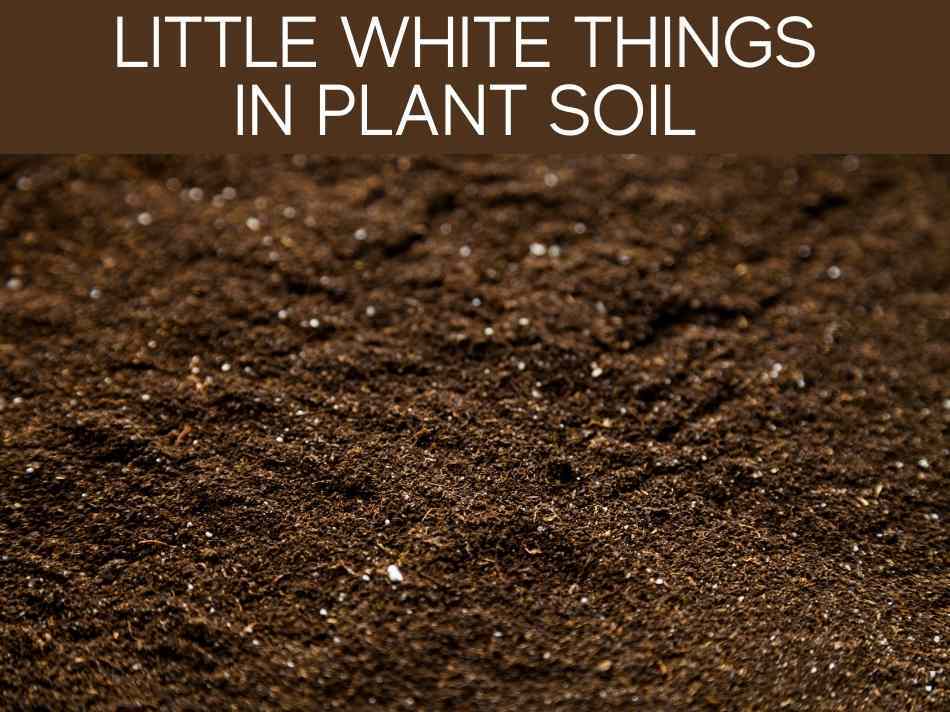
One common type of little white thing in plant soil is perlite.
This naturally occurring volcanic glass is suitable for the soil mix.
In fact, it’s added to the soil by gardeners to add nutrients to the soil and helps water to drain.
When used in potting soil, perlite is heated up to 1400- 1800 degrees Fahrenheit.
Perlite has high water content (2-5% w/w) and it can be transparent light gray to glossy black in color.
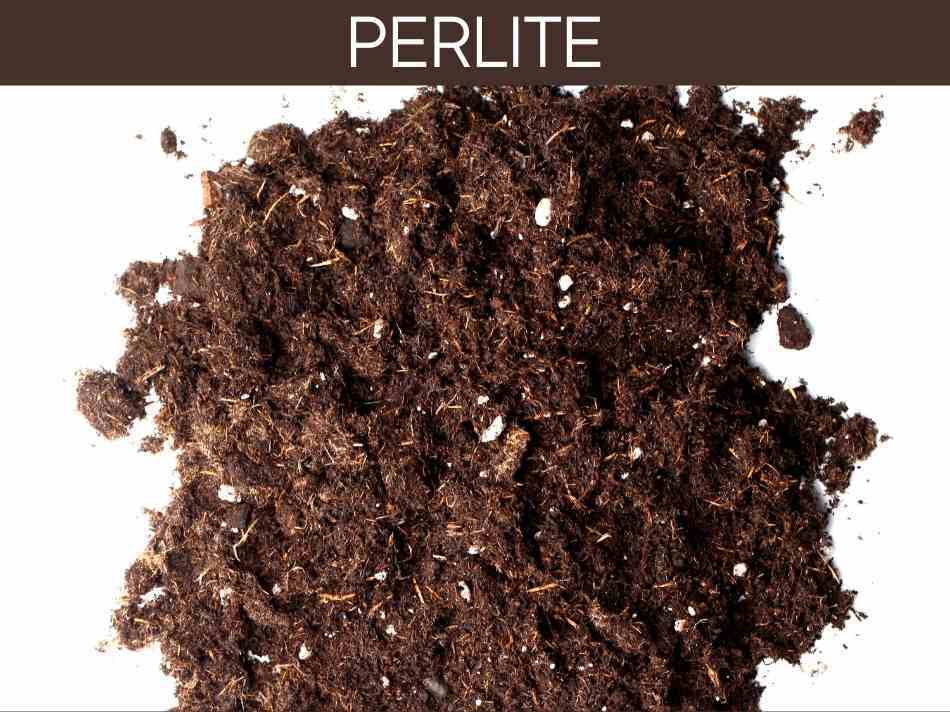
The use of perlite in the United States began in the 1940s.
Because of heating, it expands and appears like popcorn or tiny plastic foam balls mainly because of its ability to expand and high water content.
If you look closely at your houseplant soil, you can clearly see it (Don’t eat it though!).
Although it occurs naturally, perlite is a non-renewable resource.
There are many uses of perlite such as in biotechnology, agriculture, cosmetics, and a lot more (Worry not! You don’t need to learn these uses for your plant soil).
Perlite isn’t organic in nature, but it’s considered natural as it doesn’t go through any harsh synthetic processes.
You can consider it safe for your organic gardening.
In fact, if you plan on gardening as a beginner, why not add perlite to your soil mix.
Check out our complete article on why your soil smells bad (and what to do about it).
Find out what the little white balls in soil are.
Perlite in garden soil
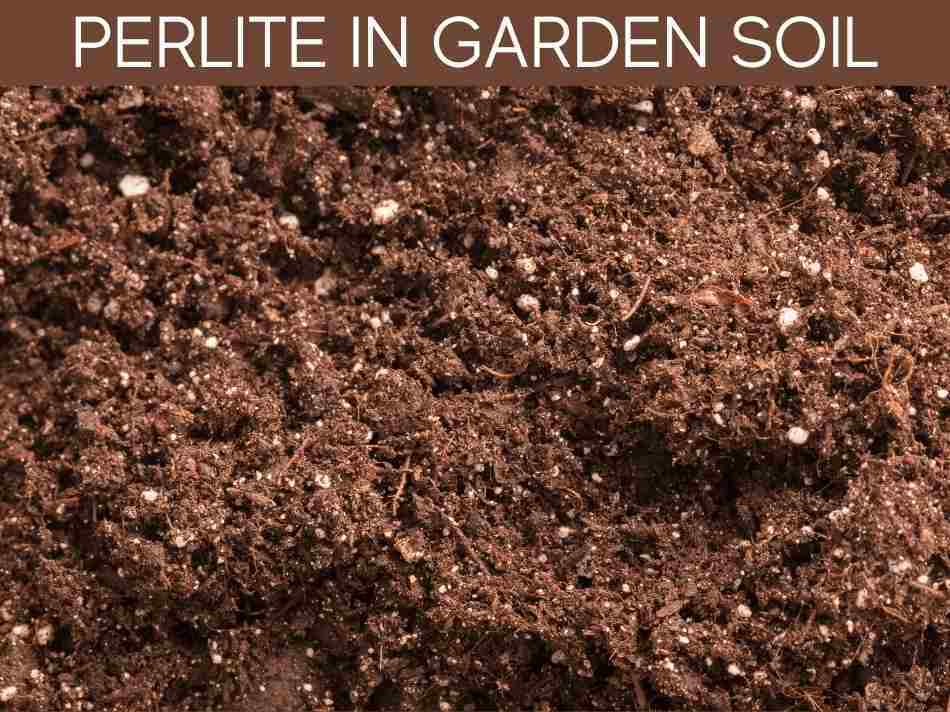
Perlite can be dusty, so if you have allergies, it’s better to take precautionary measures when using perlite in the soil.
If you or someone in the house has asthma, you have to be extra careful when dealing with perlite.
You need to know what your potting soil or seed starting mix is made of!
It’s important that you are using the right material for your plants.
Check the label and ingredients to make sure that there is perlite in the soil mix.
Because of perlite in the soil, the risk of roots drying out is minimized so it helps in providing moisture to the plant roots.
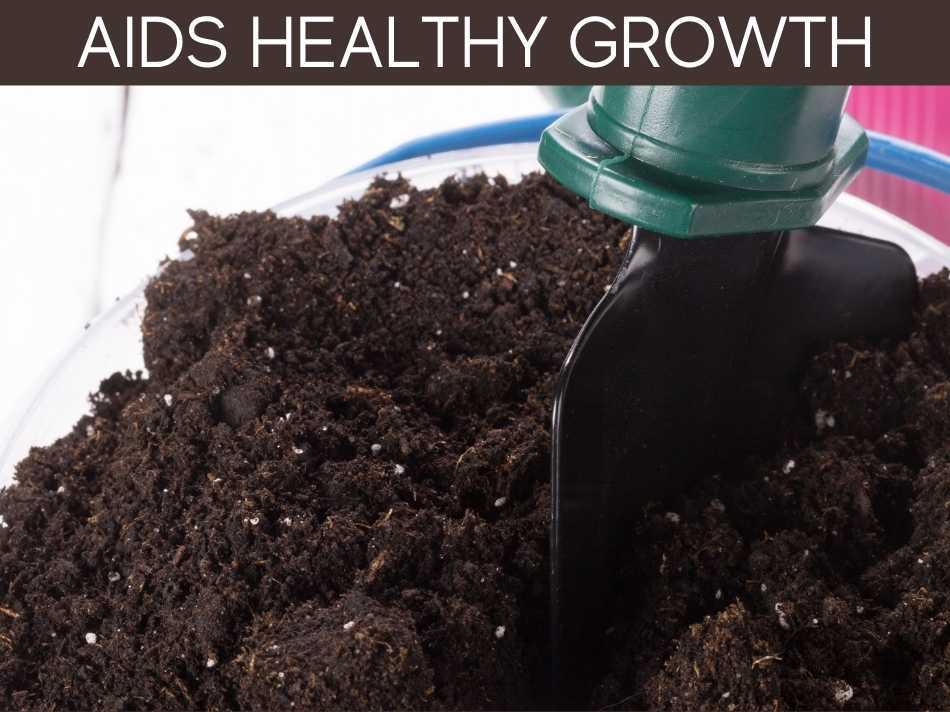
Perlite has aeration properties and it aids in the healthy growth of your house plants.
It’s possible that you could be overwatering your plants, adding perlite to the potting soil mix can provide a viable solution as it helps in water drainage and trapping the air into the soil.
It’s suitable even for your container plants.
Perlite is lighter in weight. You can use it in place of sand as it provides great drainage.
You have to moisten it before adding it to other ingredients. Plus, you have to be careful while doing so!
Now that you have enough information about perlite, it’s time to visit your garden.
Take a closer look at those little white things, maybe upload a picture, and discuss in the comments if it’s perlite.
However, it could be anything else! So you have to read on for more information.
White Substance In Garden Soil
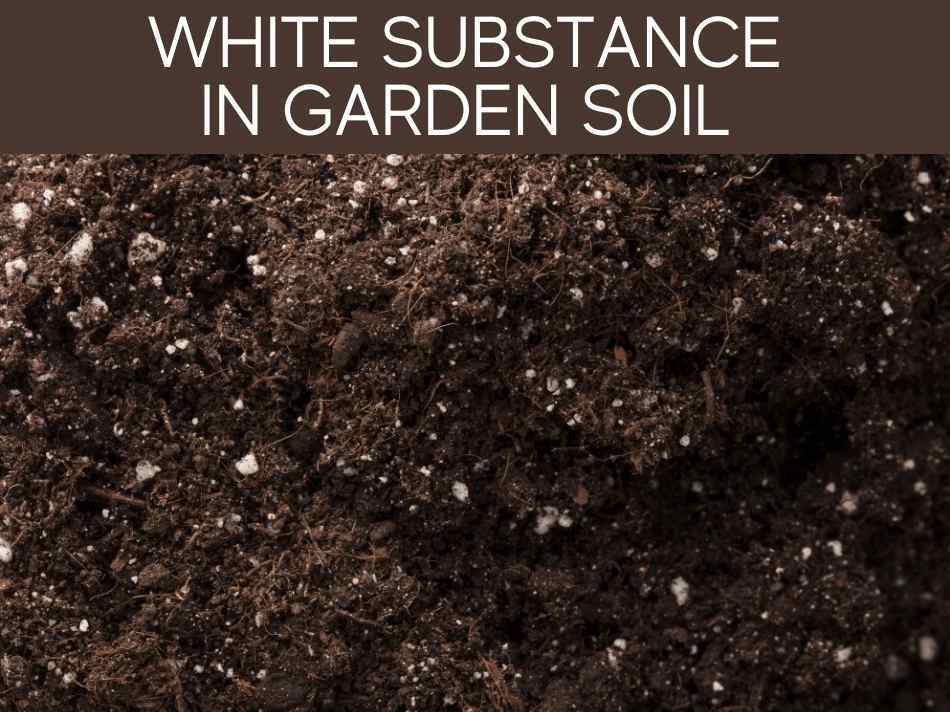
If you’ve noticed a white substance in the garden soil, it could be mycelium.
It’s actually important for the decomposition of organic matter.
Mycelium is a bundle of thread-like structures called hyphae that are part of fungal structures in soil.
Just because it’s fungal doesn’t mean it’s necessary bad for your plants.
Fungi in soil help break down dead plant & animal organic matter, thereby releasing nutrients back into the soil.
Apart from perlite, you might be observing mycelium in your garden soil. Again, it’s not something to be worried about!
Mycelium can provide benefits to your garden soil. It might sound unusual, but it’s true.
Some fungi and bacteria are important for the growth of your plants.
Mycelium can help with water retention.
Plus, your garden soil is likely to get more nutrients through mycelium and the house plants can absorb such nutrients as phosphate, nitrogen, and many other micronutrients.
Thus, this white substance in your garden soil would be suitable for the growth and strength of your plants.
See, it’s okay even if the little white thing in your plant soil turns out to be mycelium.
In fact, it can be suitable for the growth of your plants.
Check out the full article on the best soil for houseplants–and how to fix 4 common soil problems.
How to Get Rid of Tiny White Bugs In Soil?
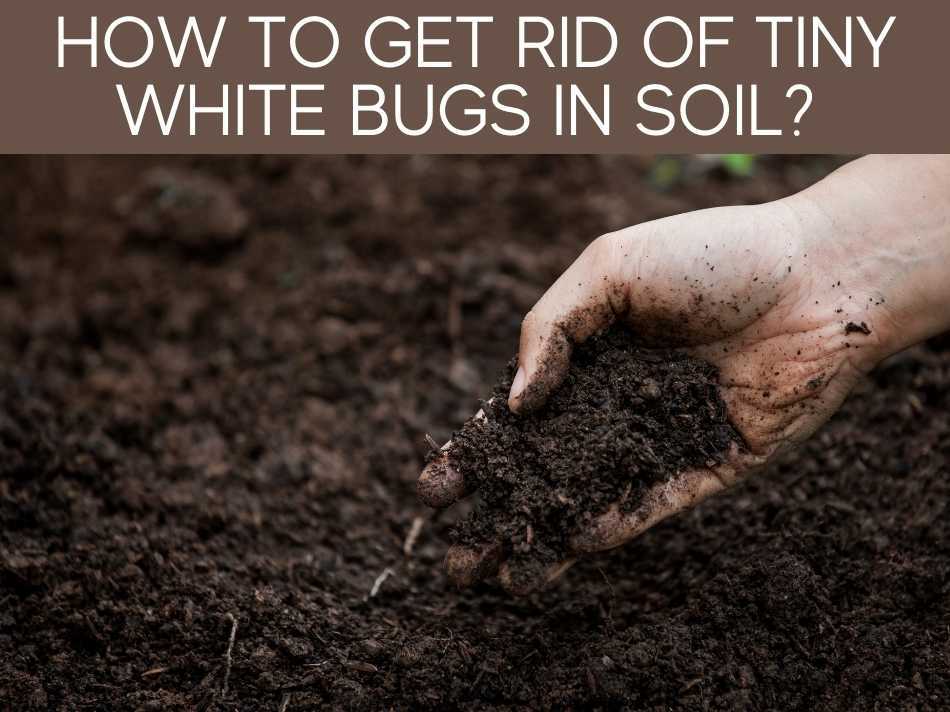
You might encounter tiny white bugs such as mealy bugs, springtails, whiteflies, grubs, and a lot more.
You want to get rid of them as it’s not a good sight for you or your visitors.
Get rid of the decaying organic matter to eliminate these tiny white bugs in the soil.
There are also other methods you can try:
- Keep your garden and gutters clean. Cleanliness prevents pests.
- Use a compost bin to avoid the infestation of the soil mites. It’s because of the decaying organic matter that you might be facing such an issue.
- Take advantage of the eco-friendly insecticides available on the market. You can check out reviews from the previous customers to see what they’re sharing about their experience.
- Prepare a mild solution using the dishwashing liquid. Add 5 Tbsp of dishwashing liquid to 1-gallon water. Spray this mixture on the white bugs to get rid of them. First, try it on a small section, and if the plants aren’t affected, but the pests go away, use it on the rest of your plants.
- Repot the plant. It’s important to change the soil of your plants. The soil should be fresh for the proper growth of your houseplants. Old soil might be infested. So, changing the old soil can fix the problem.
- Clean the affected parts of the plant or discard these parts.
- Avoid overwatering, as it provides the perfect environment for infestation of pests.
- Prevent future infestations by keeping a close eye on your plants.
There are many methods! You have the final say, you can decide what works best for you or what’s easy for you. It’s always better to focus on prevention so that you are not worried about the cure.
Checking soil moisture & soil pH can be extremely useful in preventing pests.
Read our full article on which soil meters are accurate.
Tiny White Worms In Houseplant Soil
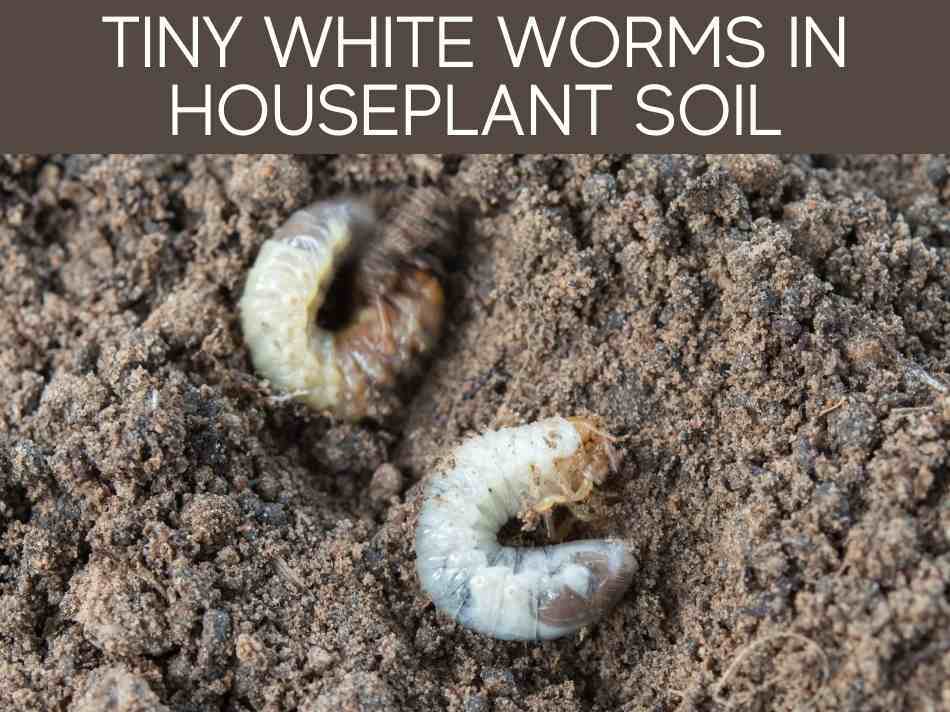
The tiny white worms that you spot in your houseplant soil are the larvae of fungus gnat.
You can expect root damage if there is an infestation.
You have to act fast as it can spread quickly.
Before you bring any new plants to your house, make sure there are no tiny worms on them.
To get rid of these tiny white worms, repot your plant.
Remove the top layer of the soil that contains these tiny white worms and use a suitable insecticide to treat the plant.
When you have removed the infestation, it’s time to focus on your houseplant soil and avoid over-watering the soil.
So, the little white things that you see in your soil could be these tiny worms.
It’s no good news, but you can be proactive and take action quickly.
Find out if you soil might be hydrophobic (and how to fix it).
White Bugs In Soil Indoor Plants
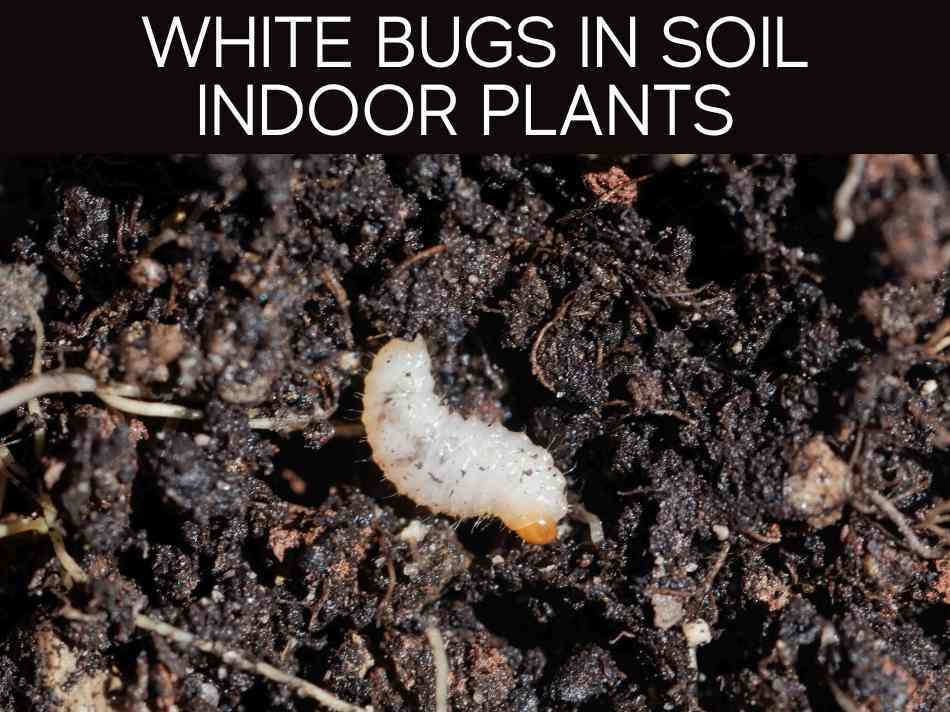
It’s also possible that the little white thing that you see in the soil of indoor plants could be the white bugs or whiteflies.
The soil mites can appear as white dots, but these are not much of an issue because of their advantage for the decomposition process.
These white bugs are harmless to you and your plants, but if the presence of such white bugs is bothering you then repot the plant.
Bear in mind that there are different types of soil mites so you have to treat them accordingly.
For the indoor plants, it could be the mealy bugs. It secretes a white substance that’s furry in nature.
They also secrete honeydew. You can get rid of mealybugs with insecticidal soap or a nozzle sprayer with an outdoor hose.
Indoor Plant Soil Turning White
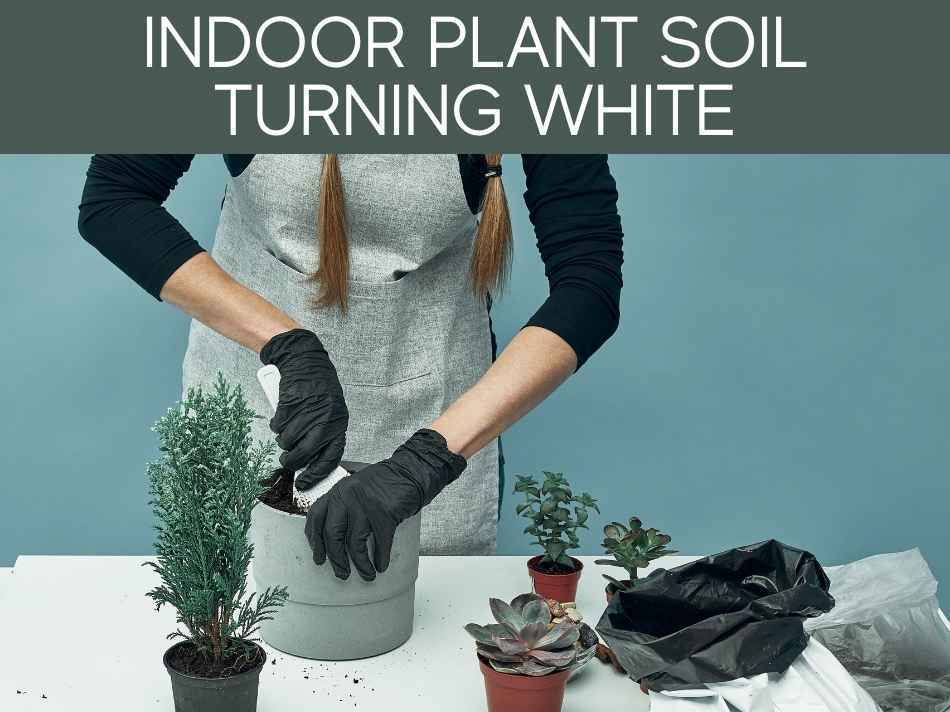
Your indoor plant soil could be turning white because of saprophytic fungus.
You can clean this white mold by scraping it off, but it’s important that it must not return.
Poor drainage, overwatering, or old potting soil could be the underlying cause so you need to check.
For proper drainage, there should be holes at the bottom of the container. Add 1-inch pebbles to a 6-inch pot.
When the smaller container is 1-inch dry, add water to it.
It’s important that you are not overwatering your houseplant. If you feel the soil is too wet, you could be overwatering.
And for potting soil make sure you are adding perlite to it. Repot your plants every two years to avoid such issues.
Summary
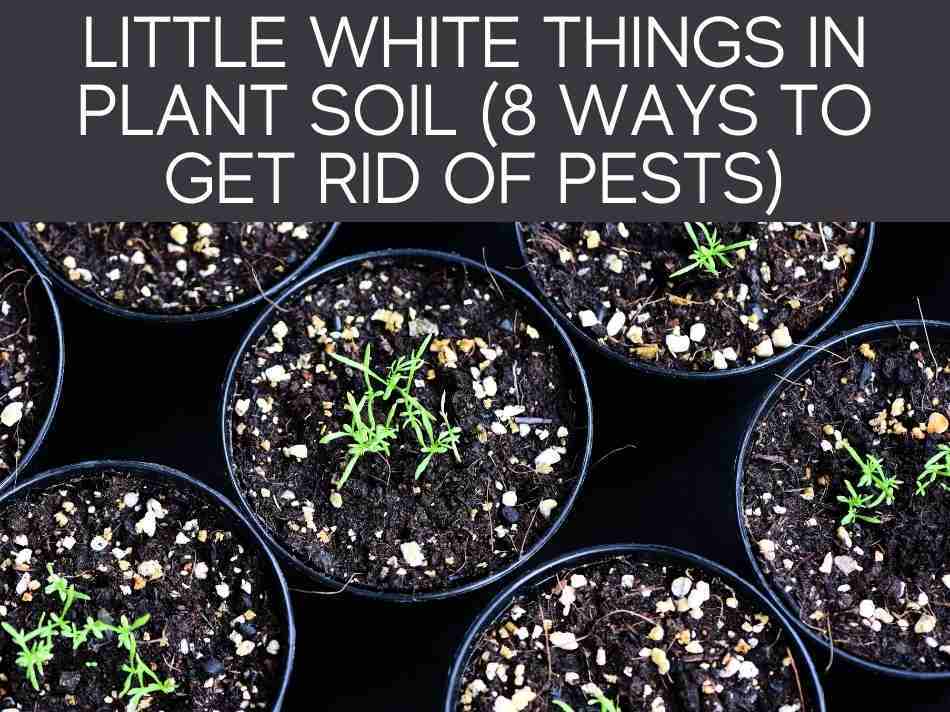
Little white things in your plant soil could be perlite, white bugs, or saprophytic fungus. You need not worry as perlite is suitable for the growth of plants. If you want to get rid of white bugs and white mold, you can simply repot the plants!

